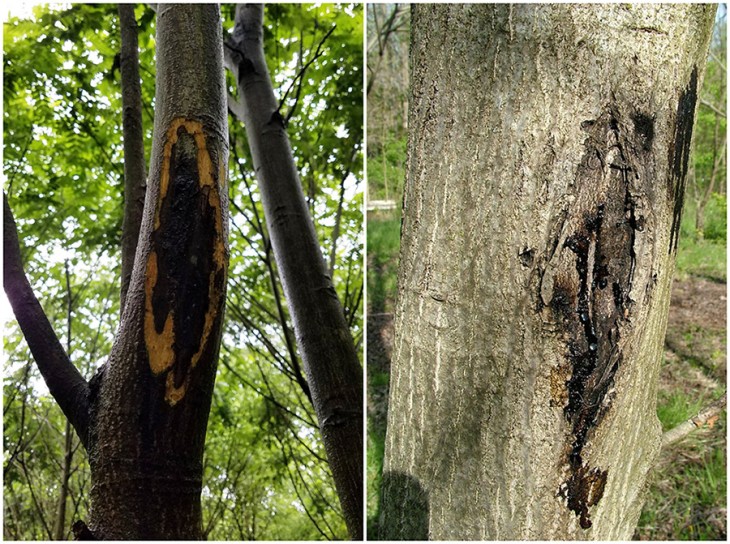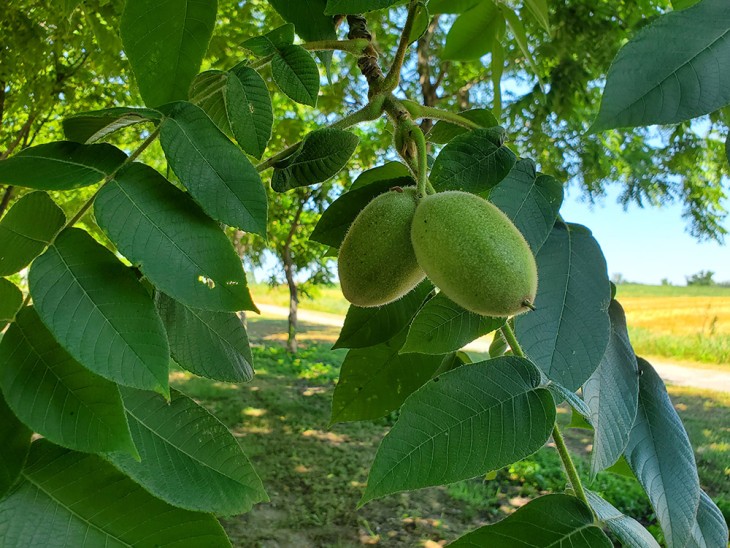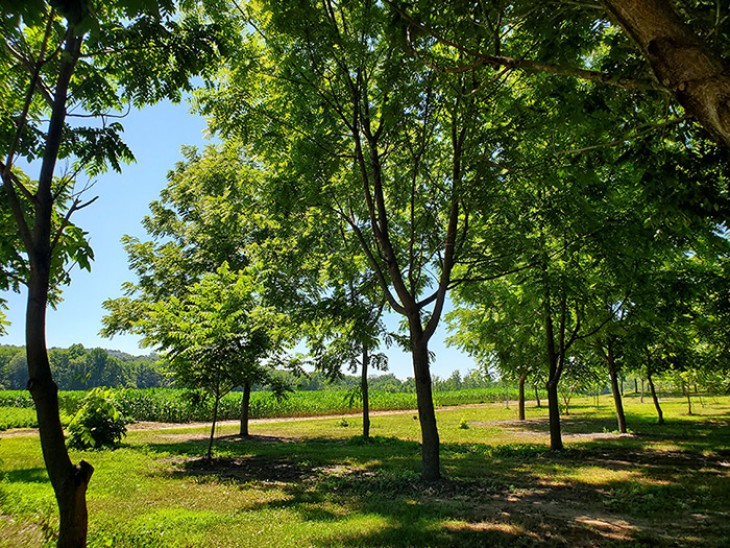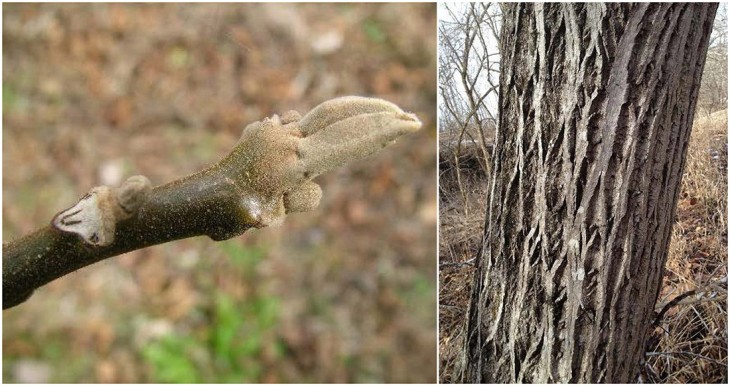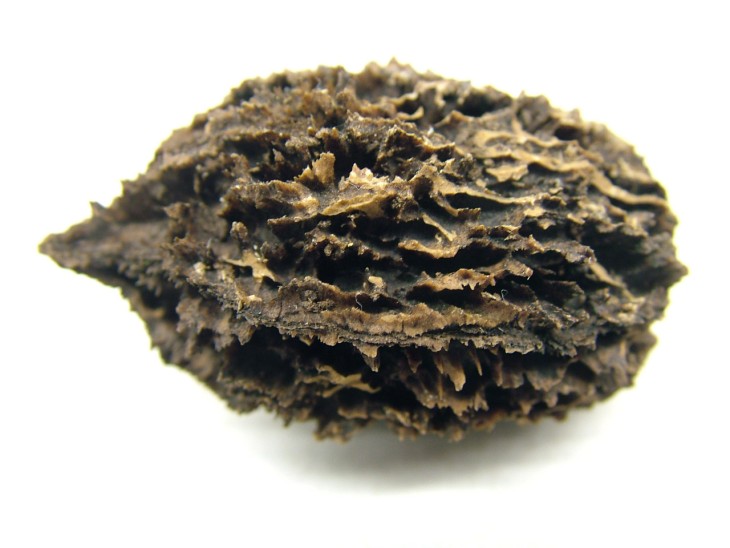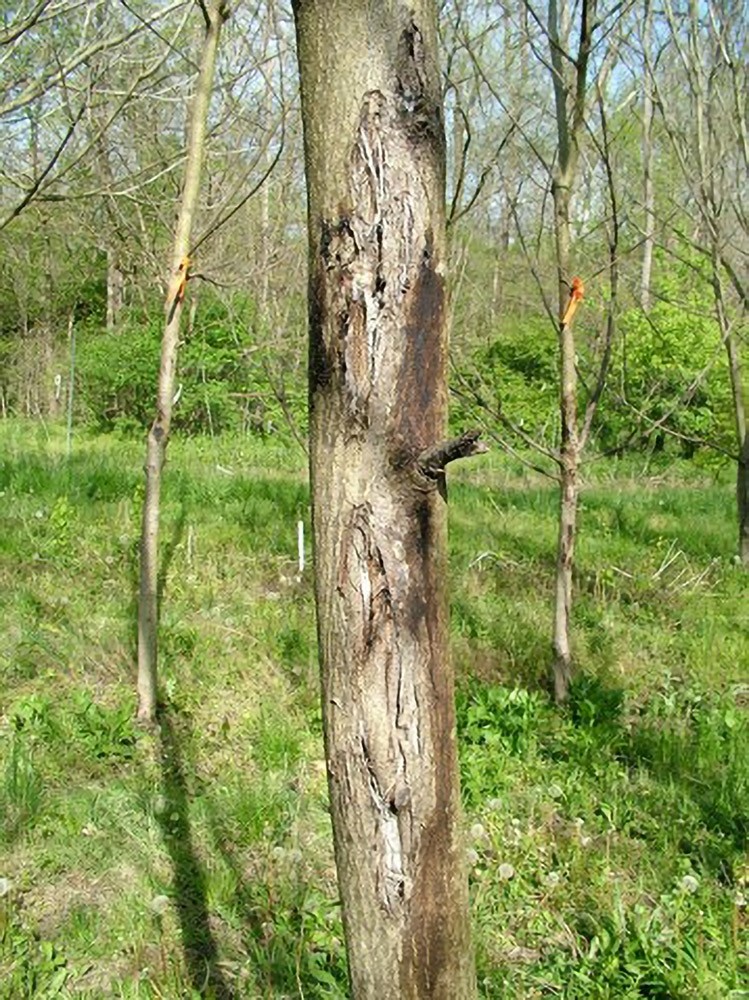
Native butternut, Juglans cinerea, is steadily disappearing from the woods of North America due to butternut canker, a non-native fungus (Ophiognomonia clavigignenti-juglandacearum) that was introduced in the mid-20th century. Scientists have yet to identify butternut trees with natural resistance, however butternuts hybridize naturally with non-native Japanese walnut (Juglans ailantifolia) and the hybrid offspring are usually healthier and more vigorous than pure butternut specimens.
Purdue University’s Cooperative Extension Service has published a resource guide, Identification of Butternuts and Butternut Hybrids, that can help you determine whether a tree is a hybrid. Scientists are actively working to better understand the link between hybridity and resistance. Measures to conserve the native germplasm in living banks and in cryo-storage are also underway.
Landowners who find butternuts on their property are encouraged to take actions to help conserve it. First, report any mature, lingering, butternut trees on Treesnap, a freely-available app that can be downloaded to your smart phone. Scientists may seek out your reported tree in the future for plant material (scion or seed). Also consider collecting nuts in the fall (you’ll have stiff competition with squirrels!). A protocol available at rngr.net offers guidance if you choose to propagate them yourself. Finally, consider appropriate growing conditions. Plant butternut seedlings or seeds in sunny forest openings or in fields or yards with good soil drainage, not under heavy shade or in areas with high moisture. Take measures to reduce competition from other plants that may compete for light or water. You may need to protect butternut trees from deer, which otherwise may use young trees for antler rubbing and browse leaves and buds.
